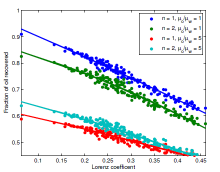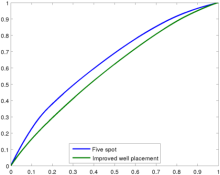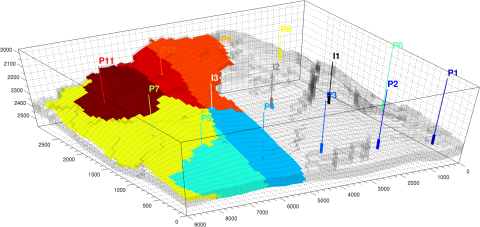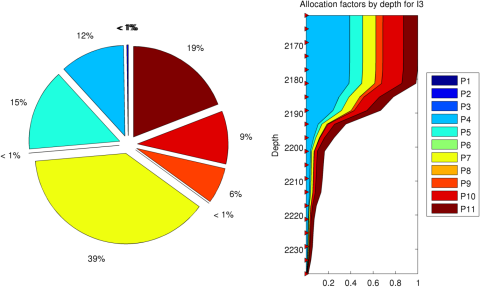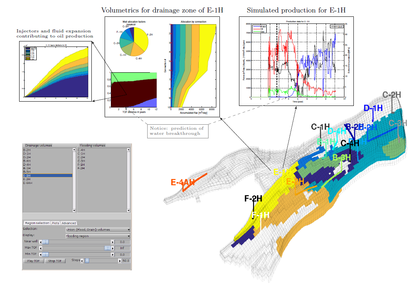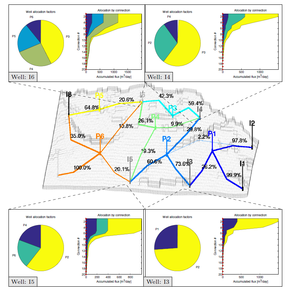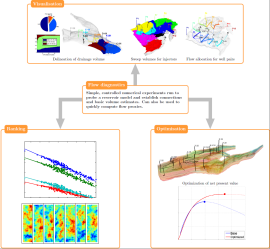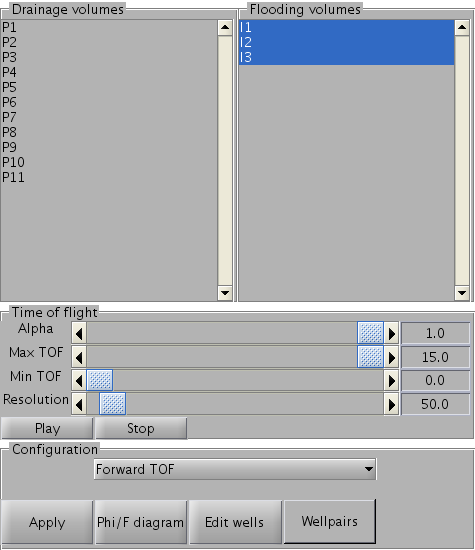|
Flow diagnostics
The term ’flow diagnostics’ as used herein, refers to a set of simple and controlled numerical flow experiments that are run to probe a reservoir model, establish connections and basic volume estimates, and quickly provide a qualitative picture of the flow patterns in the reservoir. The methods can also be used to compute quantitative information about the recovery process in settings somewhat simpler than what would be encountered in an actual field, or be used to perform what-if and sensitivity analyzes in parameter regions surrounding preexisting simulations. As such, these methods offer a computationally inexpensive alternative to performing full-featured multiphase simulations to rank, compare, and validate reservoir models, upscaling procedures, and production scenarios.
Basic quantitiesFlow diagnostics are constructed based on a (single-phase) pressure solution and can be used as efficient tools for assessing flow patterns and well allocation factors. The 'diagnostics' module in MRST offers a computationally inexpensive alternative to performing full-featured multiphase simulations in order to rank, compare, and validate reservoir models and production scenarios. The basic diagnostic routine computes the following information:
Time-of-flight and tracer partitions are often associated with streamlines, but in the 'diagnostics' module they are computed using a standard first-order, upstream, finite-volume method. This way, these quantities can easily be computed in a robust manner on general unstructured grids. However, the resulting values will not be very representative in a pointwise sense, in particular in cells that contain flow paths with significantly different residence times. More accurate values are obtained if one computes averaged time-of-flight per tracer region.
ExamplesThe two figures below exemplify how flow diagnostics can be used to pre-process and post-process more comprehensive multiphase simulations to gain better insight into flow patterns and volumetric connections in a reservoir model
Literature
DownloadThis module is included with MRST from version 2012b and onwards under the name 'diagnostics'. |
Examples of various uses of flow diagnostics. Enlarge the picture Tutorial: compute time-of-flight and stationary tracer as well as three different measures for heterogeneity. Read more..
Tutorial: visualize drainage and flooded volumes and compute well-pair diagnostics. Read more..
Tutorial: use well-allocation factors to assess the quality of upscaling. Read more..
Tutorial: use SAIGUP geomodel realization to set up a simulation model and then launche the interactive diagnostics tool. Read more..
Example of injection tracer region superimposed on a well-allocation map for the SAIGUP data set. Click to enlarge..
Release video from MRST 2013aYoutube video demonstrating interactive visualization and flow diagnostics in MRST. | |||

